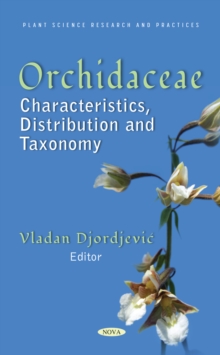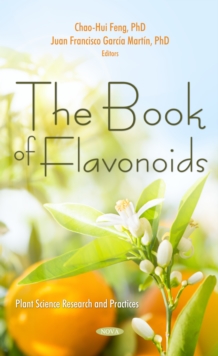
Introduction to the Three-Plane Corpuscular-Wave Biology of Forest Tree Species PDF
by Nina F. Kuznetsova
Part of the Plant Science Research and Practices series
Description
This book is based on one unifying concept - the concept of a three-plane corpuscular-wave organization of biological systems, using the example of the prokaryotic and eukaryotic cells, and a life cycle of forestry tree plants.
The range of questions and problems is not only numerous, but also controversial.
Particular attention is paid to the description of plant biology on the basis of the general principles and fundamental laws of physics; the trinity principle of DNA energy, DNA particles and DNA information at different levels of their organization; the fundamental unity of living and non-living matter, etc.
Presently, these directions of biophysics are still at the stage of formation.
Some theoretical basics of the concept have already been described in the authors' previous work, Corpuscular-Wave Nature and Wave Properties of Plant Cells, published by Nova Science Publishers, 2013.
These concepts include the corpuscular-wave nature of DNA; the notion about a cell as a quantum-mechanical system, an open and closed system, or an equilibrium system; the nature of two internal sources of energy; etc.
Many theoretical statements have yet to be formulated by future researchers, and the authors mean to set the stage by setting up the next objectives.
Firstly, they hope to show how many biological processes and mechanisms possess wave nature, with special analysis concerning the unique biotechnologies that were created by nature in plants.
The possibility of such an analysis is provided by wide ranging experimental material, which has accumulated by studying cell biology, molecular biology, biophysics, development biology, forest and classical genetics, etc.
Secondly, and more importantly, the authors wish to promote the expansion of research in this field.
Particular attention in this book is given to the ecological issues that include the peculiarities of the formation of genotype-environmental connections at different stages of the life cycle; intra-specific selection; the mechanisms and adaptive devices ensuring the contact of genetic material with the environment and the relative independence from it; the preservation of genotypic diversity; cross- and self-pollination; and other processes, which provide the viability, quality and sustainability of forest ecosystems in a constantly fluctuating environment. The material presented in the book embraces the different areas of biology and physics (classical and quantum).
It consists of two different parts. A three-plane corpuscular-wave model concerning the organization of prokaryotic and eukaryotic cells is presented in the theoretical Part One.
The questions connected with the initiation of the reproductive process and the inception of generative organs, the formation of the energetic, corpuscular and informational programs, and the creation of a three-plane matrix of corpuscular-wave organization are analyzed in Part Two (Chapters One through Three).
These processes of sexual reproduction are species-specific, and so they are described often in the example of only one species (Pinus sylvestris L.).
Different aspects of development for a forest tree species, formation of the population gene pool, and the physical models of different functional systems of forest tree species are discussed in Chapters Four and Five.
Information
-
Download - Immediately Available
- Format:PDF
- Pages:362 pages
- Publisher:Nova Science Publishers, Inc.
- Publication Date:27/12/2018
- Category:
- ISBN:9781536144123
Information
-
Download - Immediately Available
- Format:PDF
- Pages:362 pages
- Publisher:Nova Science Publishers, Inc.
- Publication Date:27/12/2018
- Category:
- ISBN:9781536144123










